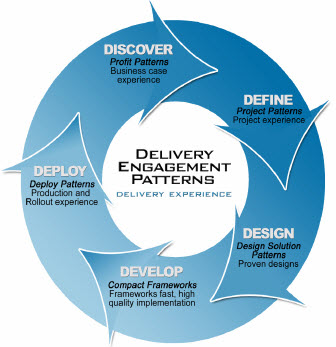
Pankaj Agrawal CEO and Founder and Ajey Nanchahal of
Compact Solutions are here in Boulder this morning. The company was founded in 2002, is privately held with headquarters in Illinois and several offices around the world. Consulting services for Compact include Architecture and design, COE and best practices, Performance optimization, Platform optimization. The solution development areas include Data Warehouse without database (C.CFF), Dashboards using BI tools, ETL migrations and upgrades (C.DIMC) and EDW/ODS implementations using standard ETL tools.
Compact delivers solutions using a 6D Methodology details are below -

Compact focuses on the Center of Excellence model and feels their expertise in that area sets them apart from the competition.They combine their domain knowledge and products to help clients. Pankaj applies his years of experience with Knightsbridge Consulting (now HP Professional Services) to the approach and services for Compact Solutions.
The ETL Migration tool that Compact offers is very interesting for its ability to help companies switch from one to another with a greatly reduced work load and time savings. The some clients have up to 200k+of code to convert when they want to make this architecture change. I'm not in love with the name of the product C.DIMC.
The P.DID Portable Data Integration Designer is Compacts answer to ETL design between platforms.
Because I know many people will want more information on the Data
Warehouse without database (C.CFF) here is the explanation of the
service from Compact.
This Compressed Flat File solution
allows an organization to migrate legacy applications and data from
expensive mainframes to efficient and cost effective open systems
servers (Unix, Oracle etc). In addition to cost and flexibility wins,
this will feed enterprise reporting to provide analysts and decision
makers a competitive advantage.The data warehouse without a database C.CFF Compact Compressed Flat File technology is an interesting way to get data in position to query. The basis for their approach is to serve certain applications that will work well with the flat file information. Compact acknowledges that the need for a standard EDW is still there for most companies but the flat file approach can save a ton of time and money to serve specific analysis needs and to serve specific applications. In my mind its a bit like a standard data mart but based on flat file analysis.
Overall I really liked the presentation today it ignited vigorous debate and excellent questions from the group. Compact Solutions offers a wide array of expertise, services and tools driven programs that will help them differentiate in the space.